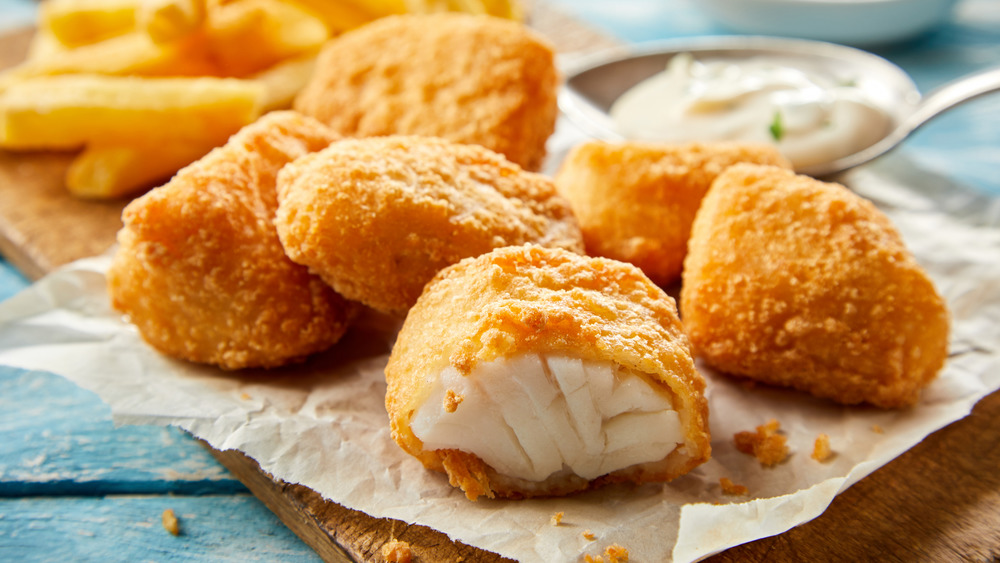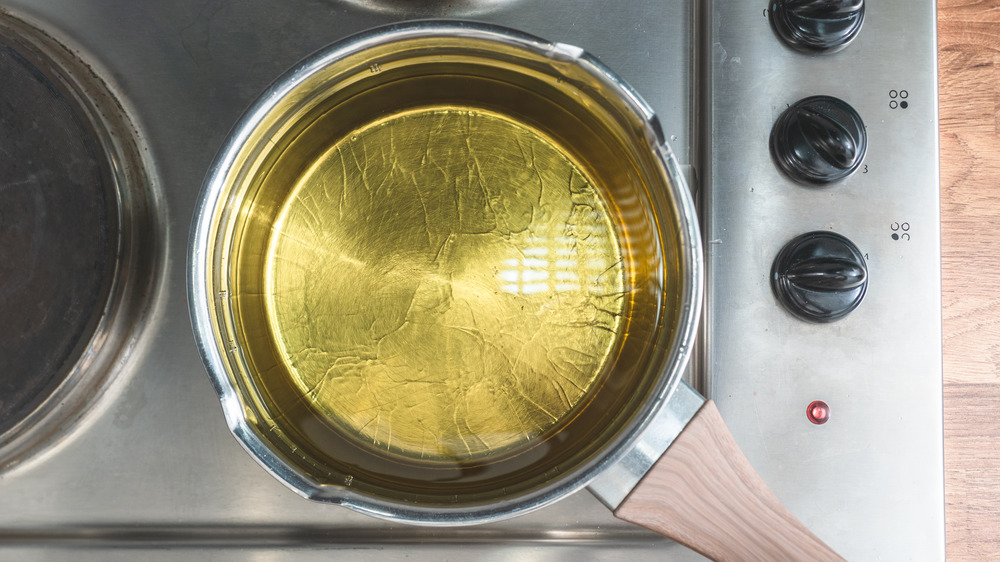The Biggest Mistake You're Making With Your Homemade Fish Batter
There's a reason that most of us swear that everything tastes better fried. Whether it's chicken, potatoes, or even pickles, if you fry it up in a vat of boiling hot oil, we'll take it. Not only are fried foods crispier and juicier than their roasted/steamed/boiled counterparts, but they're also usually more flavorful, thanks to both the oils that are absorbed during cooking and the batter that the food is coated in. Yes, fried food might not be the healthiest, but it's arguably the tastiest.
One of the most popular foods to fry is fish. Chances are you've seen — and probably eaten — beer-battered cod or haddock at your local seafood restaurant. But you can also indulge in your fried fish craving at home. If you do, however, there are a few key things you need to know to prevent your fish from ending up soggy. Here's how to ensure your fish turns out perfectly crunchy and crispy.
Don't ignore temperatures when frying fish
The most important thing to pay attention to when frying fish is the temperature of both the batter and the oil. In a Reddit thread discussing why one user's fish was turning out soggy, many people said you need to make sure your batter is ice cold before you coat your fish in it. This is because the cold batter prevents the flour from absorbing too much oil, resulting in a lighter, crispier piece of fish.
While your batter should be cold, your oil needs to be hot. Between 350 and 375 degrees Fahrenheit hot, to be exact. If the oil isn't hot enough, your fish will be greasy and soggy but if the oil is too hot, it will burn or overcook your fish. On The Water recommends cooking thinner pieces closer to 350 degrees and thicker pieces closer to 375 degrees for the best results. To make sure your food mission is fail-proof, you can use an oil thermometer to make sure the temperature is exactly where it needs to be.

